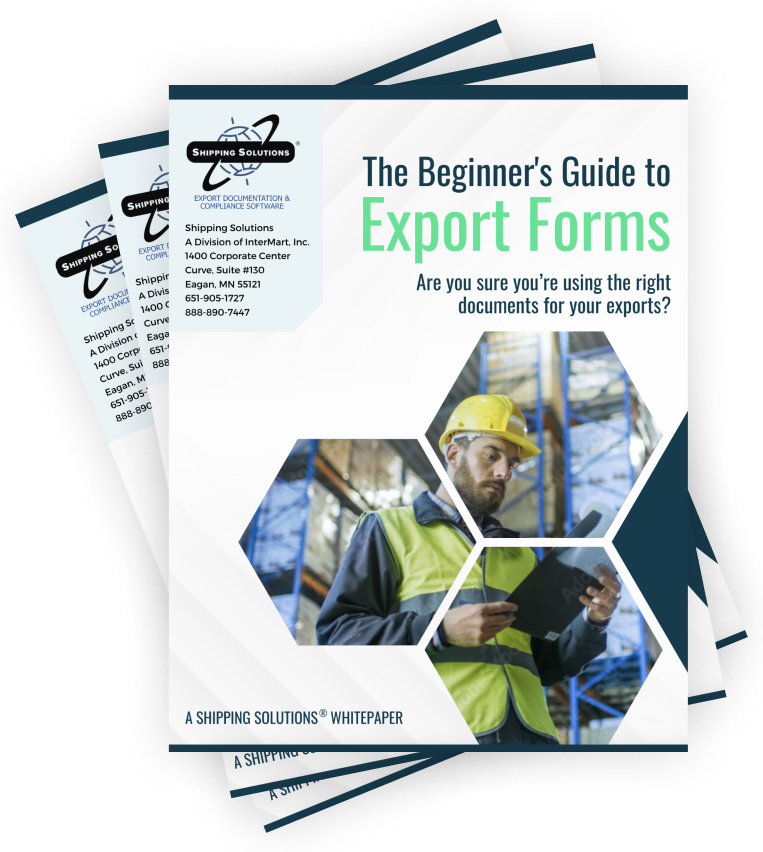The International Trade Blog International Sales & Marketing
How to Stay Current with Import-Export Product Classification Numbers
On: July 14, 2025 | By:  David Noah |
4 min. read
David Noah |
4 min. read
 Lisa recently talked to someone who was having trouble with an EEI filing. He kept getting an error and couldn’t figure out why—until he realized the Schedule B number he was using wasn’t current. As a result, AESDirect rejected the filing.
Lisa recently talked to someone who was having trouble with an EEI filing. He kept getting an error and couldn’t figure out why—until he realized the Schedule B number he was using wasn’t current. As a result, AESDirect rejected the filing.
This is an important reminder for all exporters (and importers, too!) to stay current on product classification numbers. Exporters need to be concerned about the accuracy of their export documents and Electronic Export Information (EEI) filing through AESDirect. Importers need to be concerned as well; using outdated classification codes can create customs clearance issues.
When one set of codes change, other codes are affected. For example, when updates are made to the U.S. Harmonized Tariff Schedule (HTS), Schedule B codes may also be affected. (Learn more about this in our article, HS, HTS and Schedule B: What's the Difference?) That's why it’s crucial to pay attention to product classification updates.
Product Classification Update Timeline
The World Customs Organization (WCO) generally updates the Harmonized Schedule (HS) nomenclature every five years. The last set of codes became effective January 2022.
This HS nomenclature is used as the basis for determining customs tariffs in more than 200 countries around the world. The HS influences U.S. HTS and Schedule B codes, and it can impact trade agreements that use tariff-change rules.
In addition to HTS and Schedule B changes inspired by these HS changes, the International Trade Commission (ITC) and U.S. Census Bureau typically publish annual editions of the codes at the beginning of every year, as well as supplements or revisions as required throughout the rest of the year. That means you should be reviewing these classifications regularly—not just every five years.
As part of your company’s year-end checklist as well as your Export Compliance Program (ECP), you should take the opportunity to review your products and classification numbers to see if they are subject to any newly announced changes.
How to Find the New Product Classification Numbers
- World Customs Organization: The WCO has already announced the HS nomenclature that will go into force on January 1, 2028. That date may seem a long ways away, but as I mentioned above, more than 200 countries must adjust their own tariff schedules to these changes by that date.
- U.S. Census Bureau: The Census Bureau website lists Schedule B codes on its website. Note that codes published here may become obsolete at any time; the Census Bureau recommends checking the website routinely for updated files. You can see the entire list here.
- U.S. International Trade Commission: The ITC lists current HTS numbers on its website. Just as with the Schedule B codes on the Census Bureau website, these codes may become obsolete at any time, so it’s important to revisit the website regularly and look for updates. You can see the entire list here.

Why Accurate Product Classification Is Critical
If you’re misclassifying your products, you may be committing fraud, and you could face fines and other penalties. Fortunately, there are plenty excellent classification resources available to exporters to help you avoid that fate.
I linked to the Schedule B and HTS search tools above. In addition, Shipping Solutions Product Classification Software offers a more advanced search tool that covers:
- HTS and Schedule B codes for the United States
- HS codes for most countries
- An HS mapping tool—enter the 10-digit code for one country to find the corresponding code for another
- Export Commodity Control Number (ECCN) and United States Munitions List lookups to determine if export controls may apply or if an export license is required
Still unsure about your classifications?
Contact the Trade Information Center at 1-800-USA-TRAD[E] (1-800-872-8723) or contact your local Export Assistance Center, which offers a variety of great trade resources for support.
Like what you read? Subscribe today to the International Trade Blog to get the latest news and tips for exporters and importers delivered to your inbox.
This article was first published in November 2016 and has been updated to include current information, links and formatting.

About the Author: David Noah
As president of Shipping Solutions, I've helped thousands of exporters more efficiently create accurate export documents and stay compliant with import-export regulations. Our Shipping Solutions software eliminates redundant data entry, which allows you to create your export paperwork up to five-times faster than using templates and reduces the chances of making the types of errors that could slow down your shipments and make it more difficult to get paid. I frequently write and speak on export documentation, regulations and compliance issues.


